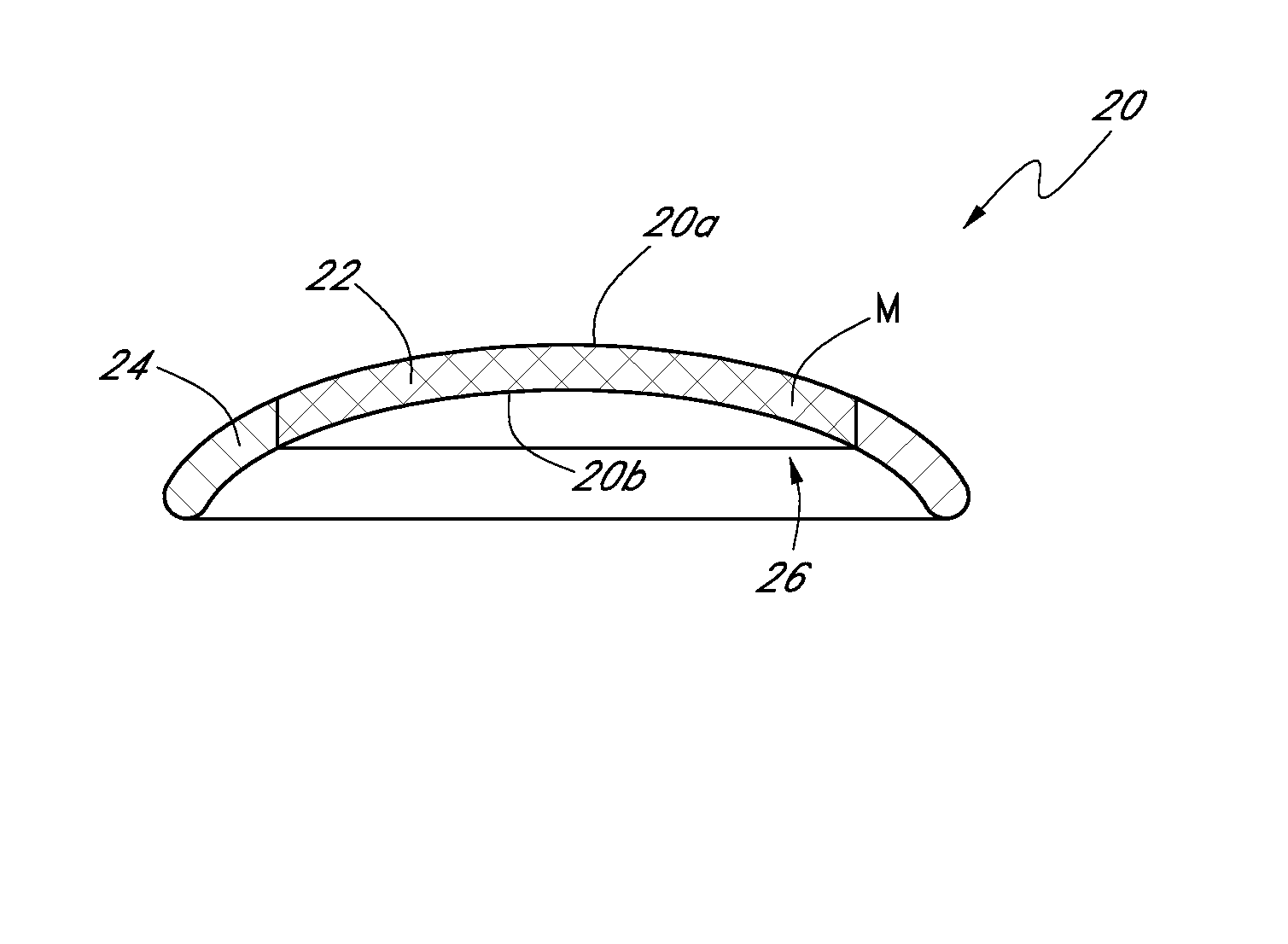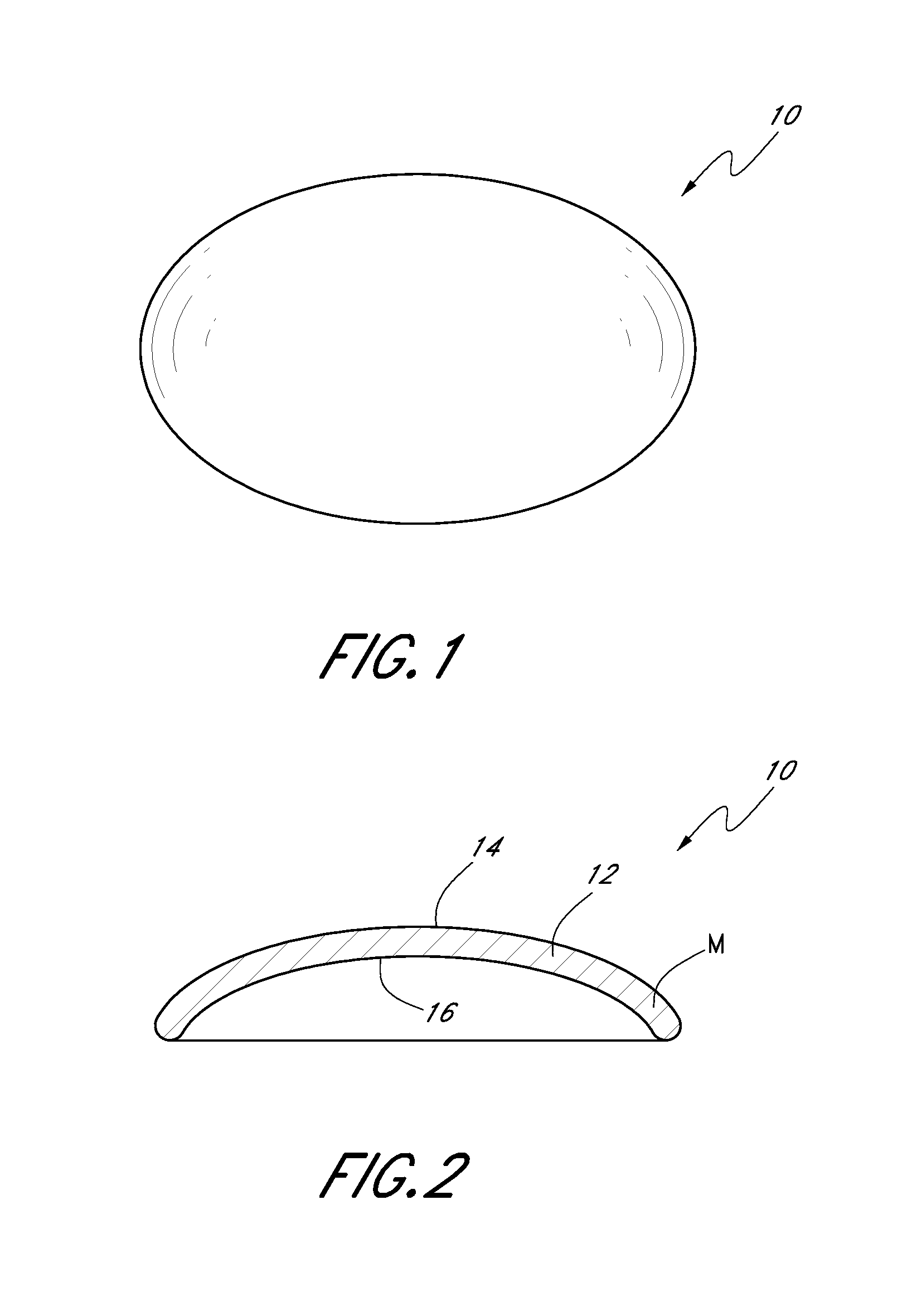Methods for improving the hydrophilicity of contact lenses and contact lenses having the same
a technology of hydrophilicity and contact lenses, applied in the field of contact lenses, can solve the problems of not being able to popular soft contact lenses cannot achieve the same effect as spectacles or laser refractive, rigid gas permeable contact lenses, etc., to achieve the effect of improving the hydrophilicity of contact lenses and reducing the contact angle of contacts
- Summary
- Abstract
- Description
- Claims
- Application Information
AI Technical Summary
Benefits of technology
Problems solved by technology
Method used
Image
Examples
Embodiment Construction
[0025]In the following detailed description, terms such as “curve,”“curvature” and “curved surface” are interchangeable. Likewise, descriptive terms such as “substantially rigid” and “hard” and “substantially flexible” and “soft” are used interchangeably. Similarly, terms of sequence, such as “first” and “second,” are used to simplify the description of the illustrated embodiments. Because other sequences are possible, however, the present invention should not be limited to the illustrated embodiments.
[0026]FIGS. 1 and 2 illustrate a rigid gas permeable (RGP) lens 10 having a substantially rigid portion 12 defined between an anterior surface 14 and a posterior surface 16 of the RGP lens 10. The contact lens 10 comprises a material, M, which may be substantially optically transmissive. In one embodiment, the RGP lens 10 is sized to cover the cornea of a human eye and at least a portion of its surrounding conjunctiva. The anterior and posterior surfaces 14, 16 are preferably curved. I...
PUM
 Login to View More
Login to View More Abstract
Description
Claims
Application Information
 Login to View More
Login to View More - R&D
- Intellectual Property
- Life Sciences
- Materials
- Tech Scout
- Unparalleled Data Quality
- Higher Quality Content
- 60% Fewer Hallucinations
Browse by: Latest US Patents, China's latest patents, Technical Efficacy Thesaurus, Application Domain, Technology Topic, Popular Technical Reports.
© 2025 PatSnap. All rights reserved.Legal|Privacy policy|Modern Slavery Act Transparency Statement|Sitemap|About US| Contact US: help@patsnap.com



